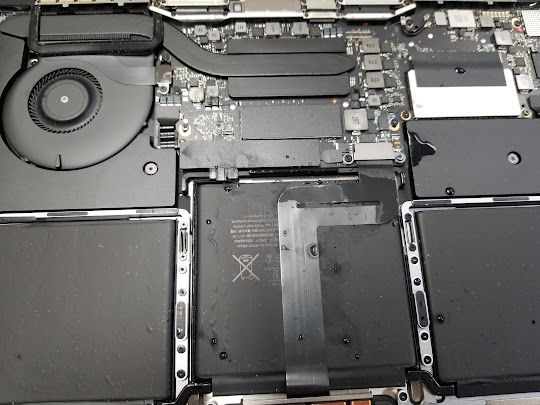Accidents happen, and when it comes to our beloved MacBook, water and coffee spills are some of the most common mishaps we encounter. These incidents can cause significant damage and jeopardize the functionality of our devices. In this blog post, we will delve into the differences between MacBook water damage and coffee damage, exploring the risks they pose and the solutions available to recover your valuable MacBook.
MacBook Water Damage: Water damage to a MacBook can occur through various scenarios, such as accidental spills, exposure to rain, or even dropping it into a body of water. Water can infiltrate the delicate components of your MacBook, leading to a range of issues, including malfunctioning keys, unresponsive trackpad, distorted display, or complete system failure.
The severity of water damage depends on several factors, including the amount of water involved, the duration of exposure, and the specific components affected. It is crucial to take immediate action when water damage occurs to prevent further harm and increase the chances of successful recovery.
MacBook Coffee Damage: Coffee damage, on the other hand, typically results from spills involving coffee, tea, or other liquids containing sugar, milk, or creamer. The composition of these liquids introduces additional risks and challenges compared to plain water spills. The sugars and other substances present in coffee can cause corrosion and electrical short circuits, exacerbating the damage to internal components.
Similar to water damage, the extent of coffee damage depends on the quantity of liquid spilled, the duration of exposure, and the affected areas. However, coffee spills tend to be more challenging to address due to the sticky residues left behind and the potential for more severe corrosion.
Dealing with MacBook Water and Coffee Damage:
Act swiftly: Regardless of the type of spill, the first step is to turn off your MacBook and disconnect it from any power source. This helps prevent potential short circuits and further damage.
Avoid drying methods: While it may be tempting to use a hairdryer or heat source to expedite the drying process, this can actually cause more harm. Instead, gently blot any excess liquid with a soft, absorbent cloth.
Seek professional assistance: It is highly recommended to take your MacBook to a professional repair service experienced in handling water and coffee damage. They have the expertise and specialized tools to thoroughly assess the damage and implement the appropriate repairs.
Data backup: If possible, back up your data before taking your MacBook for repairs. This ensures the safety of your files in case further complications arise during the repair process.
Component replacement: Depending on the severity of the damage, the repair technician may need to replace specific components, such as the keyboard, logic board, or display, to restore your MacBook's functionality.
Prevention for the future: Consider investing in a protective case or keyboard cover to safeguard your MacBook against spills. Additionally, exercise caution when working near liquids to minimize the risk of accidents.
Conclusion: Both water damage and coffee damage pose significant risks to your MacBook, affecting its performance and longevity. Acting swiftly, seeking professional assistance, and following proper repair procedures are crucial for successful recovery. Remember, prevention is key, so take precautions to avoid spills and protect your MacBook from potential accidents. By taking these steps, you can minimize the impact of spills and ensure your MacBook stays in excellent condition for years to come.





























Comments